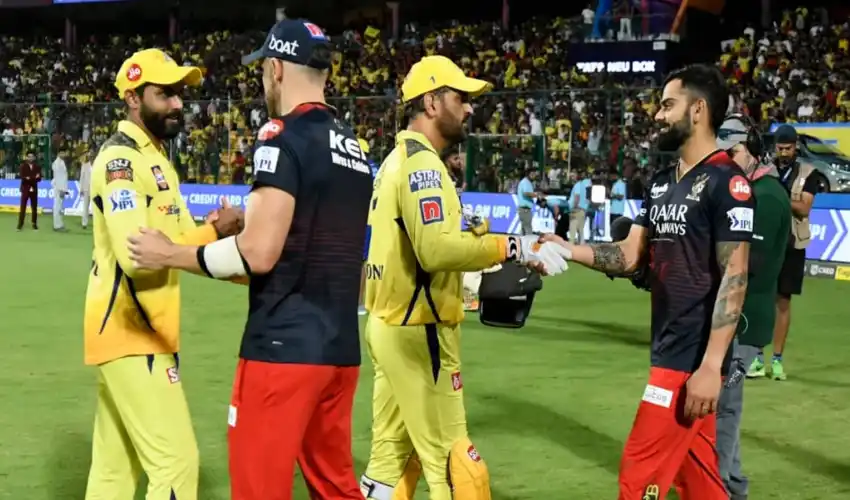The Indian Premier League (IPL) is one of the most celebrated cricket tournaments globally, captivating millions of fans with its electrifying matches and star-studded teams. Predicting the outcomes of IPL matches has become an engaging activity for fans, analysts, and bettors alike. But what are the best methods for IPL match predictions? This article explores proven strategies, tools, and factors that can help improve the accuracy of TODAYS CRICKET PREDICTIONS match predictions.
- Analyzing Team Form and Performance
Understanding a team’s recent form is a critical starting point for predicting match outcomes. Observing the following factors can offer valuable insights:
- Recent Wins and Losses: A team on a winning streak often has boosted morale, while consecutive losses might indicate issues.
- Net Run Rate (NRR): This metric reflects a team’s overall performance across the tournament.
- Head-to-Head Records: Analyzing past encounters between two teams can reveal patterns and rivalries that might influence outcomes.
- Assessing Player Performance
Player performance plays a significant role in determining match results. Here’s how to analyze it:
- Key Players: Identify in-form players such as power hitters, top bowlers, and consistent all-rounders.
- Injury Reports: A key player’s absence due to injury can significantly affect a team’s chances.
- Past Performance on the Venue: Some players excel on certain grounds due to favorable pitch or weather conditions.
- Understanding Pitch and Ground Conditions
The pitch and ground conditions can heavily influence a match’s outcome. Factors to consider include:
- Pitch Type: Is the pitch spinner-friendly, pacer-friendly, or neutral?
- Boundary Dimensions: Smaller grounds often lead to high-scoring games.
- Weather Conditions: Rain or dew can affect playing conditions and strategies, especially in night games.
- Considering Toss Outcomes
The toss can play a pivotal role in deciding the match, especially in IPL. Teams winning the toss often make decisions based on pitch and weather conditions. For instance:
- Chasing Advantage: Teams usually prefer chasing targets in dew-prone venues.
- Batting First: On slow pitches, batting first can provide an advantage as the pitch deteriorates.
- Leveraging Statistical Models and Data Analysis
With the rise of data science, advanced statistical models have become a cornerstone for accurate match predictions. Tools like Python, R, and machine learning models analyze historical data to predict outcomes. Popular metrics include:
- Player Performance Indices: A combined analysis of batting, bowling, and fielding stats.
- Win Probability Models: These models assess the likelihood of a team winning based on various parameters.
- Real-Time Analytics: Platforms like CricViz provide ball-by-ball data analysis to predict match dynamics.
- Following Expert Opinions and Analysis
Many seasoned cricket analysts and former players provide pre-match insights. Tuning into their predictions can be beneficial as they combine experience with statistical data. Platforms like ESPNcricinfo and Cricbuzz offer detailed match previews and expert opinions.
- Tracking Team and Player Strategies
Understanding the strategic approach of teams can provide a prediction edge:
- Team Combinations: Assessing the balance between batsmen, bowlers, and all-rounders.
- Match Scenarios: How teams perform under pressure, such as chasing high totals or defending low scores.
- Adaptability: Teams with flexible strategies tend to perform better in unpredictable situations.
- Utilizing Betting Odds and Market Trends
Betting odds provided by bookmakers can indicate the perceived strength of teams. While caution is advised, odds often reflect aggregated insights from multiple experts and data points.
- Odds Comparison: Identifying value bets by comparing odds across platforms.
- Market Movements: Sudden shifts in odds can indicate critical developments like injuries or lineup changes.
- Incorporating Social Media and Fan Sentiments
Social media platforms like Twitter and Instagram are treasure troves of real-time updates and fan sentiments. Monitoring these platforms can uncover:
- Injury Updates: News about player fitness and availability.
- Team Announcements: Lineups and last-minute changes.
- Fan Polls: Crowd sentiments, though subjective, can indicate trends.
- Studying Historical Trends and Patterns
IPL’s rich history provides a plethora of data for analysis. Some trends worth considering include:
- Winning Percentages: How often teams win in specific venues.
- Playoff Performances: Some teams excel under high-stakes conditions.
- Player Consistency: Identifying players who perform reliably across seasons.
- Using Predictive Tools and Apps
Several online platforms and mobile apps are designed for cricket match predictions. These tools use algorithms to predict outcomes based on data inputs. Popular options include:
- Dream11 and MyTeam11: Fantasy platforms that rely on player performance predictions.
- CricPredict: Provides predictive insights based on historical and live data.
- AI-Powered Models: Apps that utilize artificial intelligence to forecast results.
- Avoiding Common Pitfalls
While predictions can be insightful, they’re never foolproof. Avoid these common mistakes:
- Overreliance on Star Players: Cricket is a team game, and overdependence on a single player can be risky.
- Ignoring Venue-Specific Trends: Each venue has unique characteristics that influence outcomes.
- Biases: Personal preferences for teams or players can cloud judgment.
Conclusion
Predicting IPL match outcomes is as thrilling as the matches themselves. By combining data analysis, expert opinions, and a deep understanding of cricketing nuances, enthusiasts can make more informed predictions. While no method guarantees accuracy, a well-rounded approach improves the chances of success. Remember, IPL is as much about unpredictability as it is about skill and strategy, making every prediction an exciting challenge.
